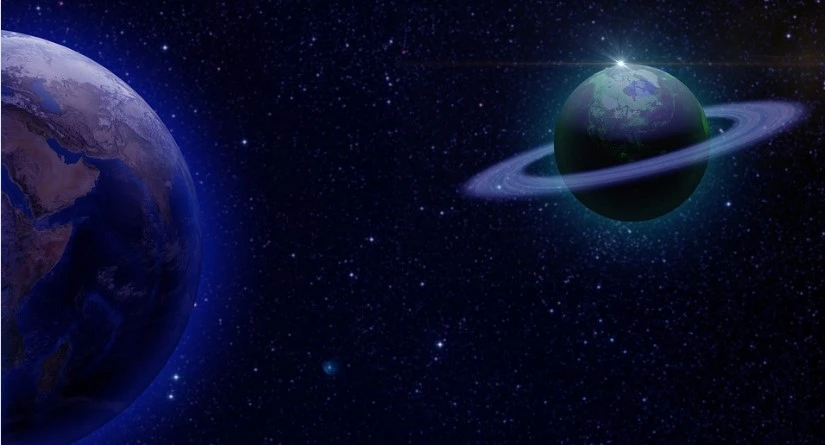A geographic information system (GIS) is a computer system for capturing, storing, analyzing, and displaying data related to positions on Earth’s surface. GIS can show many different kinds of data on one map. This makes it easy to see patterns and relationships.
A geographical information system (GIS) is a system designed to capture, store, manipulate, analyze, manage, and present all types of spatial or geographical data. GIS applications are tools that allow users to create interactive queries (user-created searches), analyze spatial information, edit data in maps, and present the results of all these operations. A GIS can be used to visualize environmental phenomena such as air quality monitoring stations or ocean temperature changes over time.
It can also be used for more mundane tasks such as finding the best route for a salesperson to take on their next call or locating the closest pizza restaurant to your current location.
What Do You Mean by Geographical Information System?
A geographical information system (GIS) is a computer system that captures, stores, manipulates, analyzes, manages, and presents all types of spatial or geographical data. It is able to integrate, interpret and display both digital and analog data from any source in order to provide new insights into relationships, patterns, and trends. Essentially, a GIS allows you to visualize data in a way that traditional methods simply cannot achieve.
This can be extremely useful for everything from city planning to disaster relief. Most GIS software these days is web-based, meaning it can be accessed from anywhere in the world with an internet connection. However, some desktop-based solutions do still exist for those who prefer or require this type of setup.
What’s an Example of GIS?
GIS is a computer system that captures, stores analyze, and displays data related to positions on Earth’s surface. GIS can show many different kinds of data on one map. This makes it easier to visualize and analyze patterns and relationships.
For example, GIS might be used to track the spread of an invasive species of plant. The map would show where the plant has been found. It would also show environmental factors like rainfall and temperature.
This information could help scientists understand how the plant spreads and what conditions allow it to thrive.

What are 3 Examples of Gis?
GIS stands for Geographic Information System. It is a system that is used to capture, store, manipulate, analyze, manage, and present spatial or geographic data. There are many different types of GIS software, but some of the most popular ones include ArcGIS, QGIS, and MapInfo.
Each has its own unique set of features and capabilities. Here are three examples of how GIS can be used:
1. Mapping crime hotspots in a city
Police departments can use GIS to map out where crimes are happening the most. This information can then be used to deploy officers to areas that need more patrols.
2. Planning a new road
When planning a new road or highway, engineers need to take into account many factors such as terrain, land use, environmental constraints, etc. GIS can be used to help plan the route of the road and identify potential problems before construction even begins.
3. Analyzing demographic data
Businesses often use GIS to better understand their customer base.
What is the Importance of Geographic Information Systems?
Geographic information system (GIS) is a tool used for gathering, managing, and analyzing data. It is used to create maps and other visuals that help people understand the relationships between geographical features and data. There are many benefits of using GIS.
It can be used to analyze large amounts of data, identify patterns, and make decisions. It can also be used to monitor changes over time, such as the spread of a disease or the effects of a natural disaster. GIS is an important tool for decision-makers in all sectors of society, from government agencies to businesses.
It helps them better understand complex problems and make informed decisions.
Geographic Information System Example
A geographic information system (GIS) is a powerful tool that can be used to help us better understand the world around us. GIS can be used to track and analyze data, such as population density, land use, and natural resources. It can also be used to create maps and 3D visualizations.
In this blog post, we will take a closer look at one example of how GIS can be used: tracking the spread of disease. By understanding how diseases spread, we can develop better methods for preventing and treating them. When an infectious disease breaks out, it is important to track its spread in order to contain it.
In the past, this was done by manually tracking cases and plotting them on a map. This process was time-consuming and often inaccurate. With GIS, we can now track the spread of disease in real time with much greater accuracy.
We can input data from multiple sources (e.g., hospitals, and laboratories) into a GIS platform and then visualize the data on a map.
Finally, A geographical information system (GIS) is a system designed to capture, store, manipulate, analyze, manage, and present all types of spatial or geographical data. GIS applications are tools that allow users to create interactive queries (user-created searches), analyze spatial information, edit data in maps, and present the results of all these operations.
